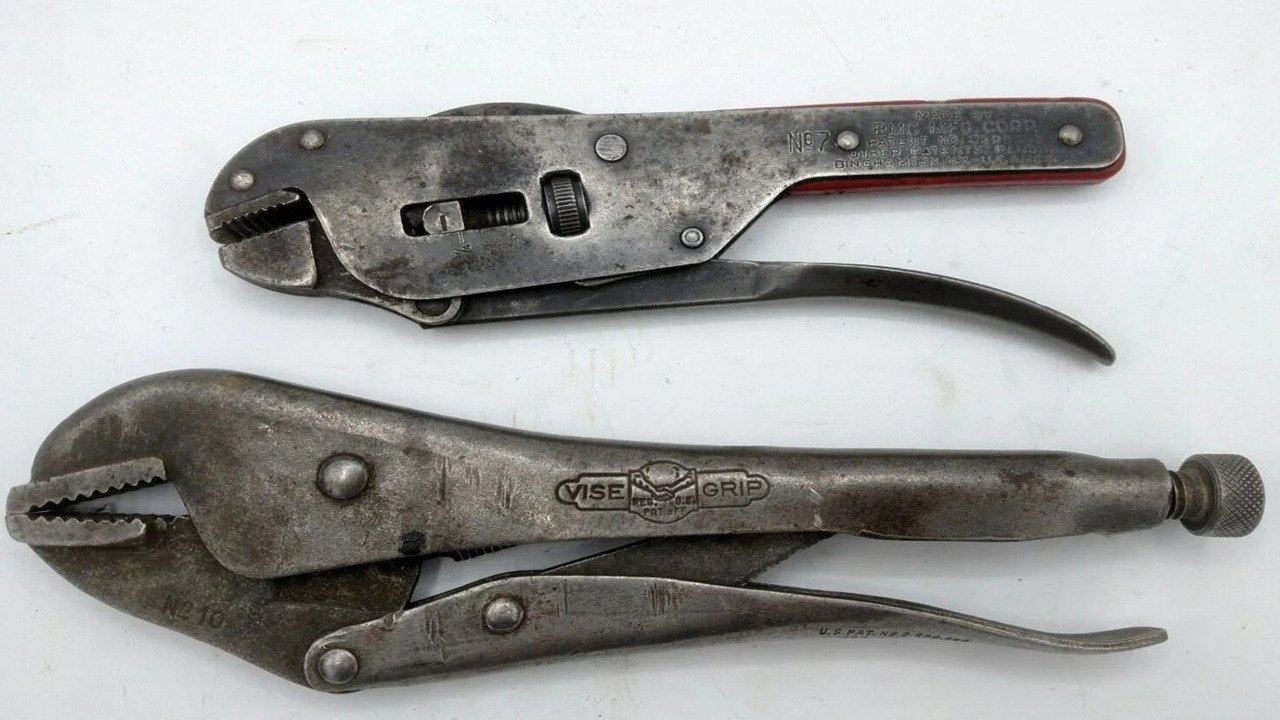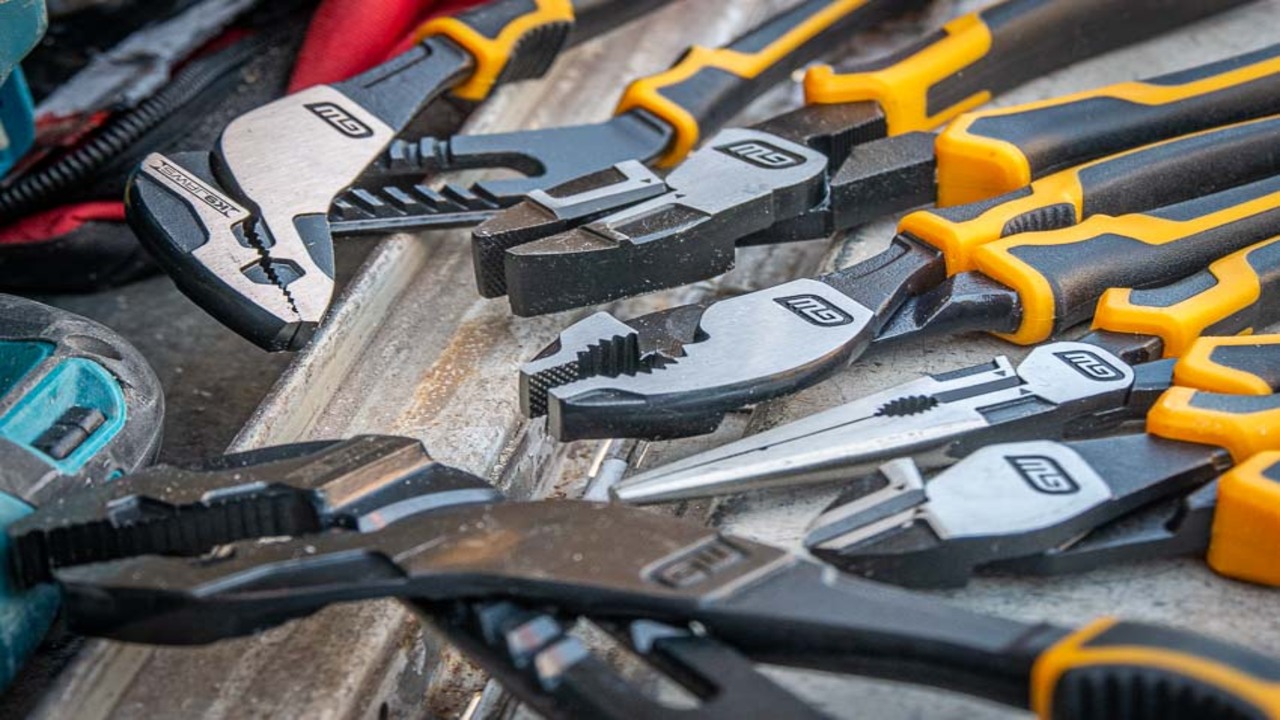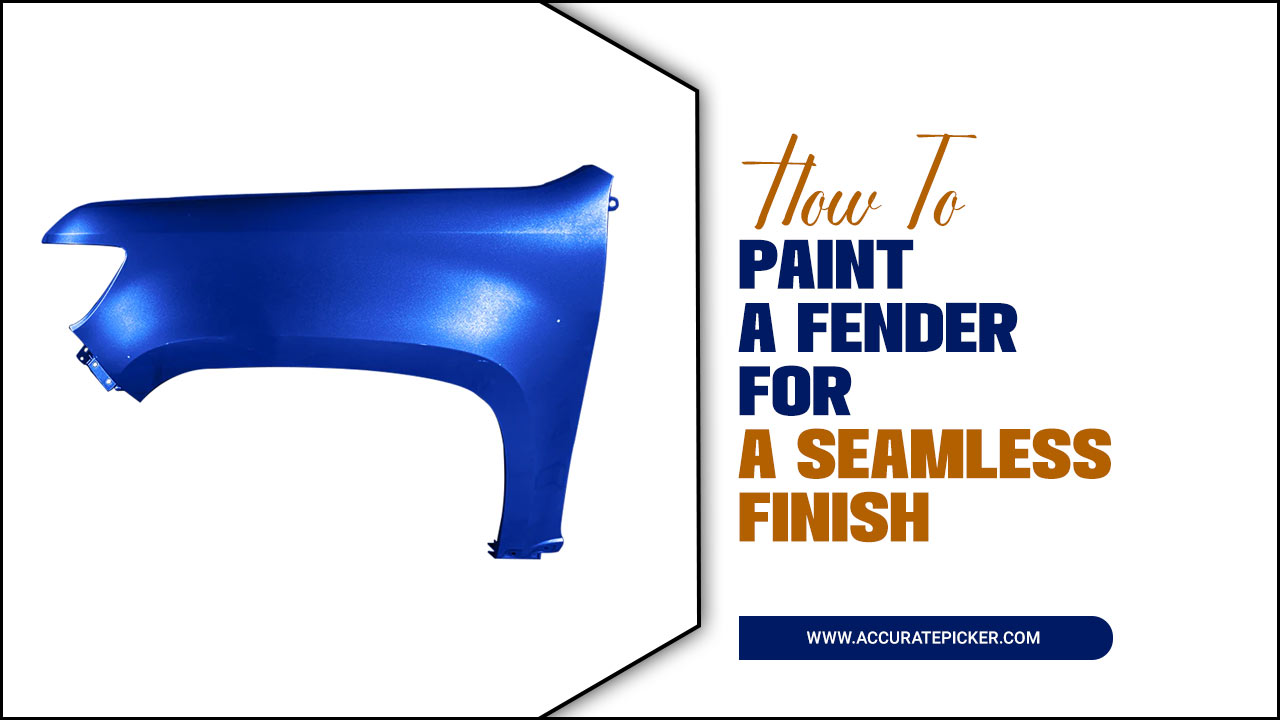The history and evolution of pliers dates back centuries, and they have been a staple of the toolbox for many generations. Pliers are a type of hand tool used for gripping and manipulating objects, and they are made up of two metal arms joined at a pivot point.
Over time, pliers have evolved to have an even greater range of uses and have become an essential tool for a variety of tasks. This article will explore the history and evolution of pliers, from their first use to modern variations, and discuss the many ways they are used in today’s world. Get ready to learn about the fascinating history and evolution of pliers and why they remain an important tool for many people.

The Evolution Of Pliers: A History

Pliers are an essential tool for everyday use. They are used for a variety of tasks such as gripping, cutting, bending, and turning. The history and evolution of pliers dates back centuries and has seen many changes over time. From the original blacksmith-crafted pliers to today’s modern multi-purpose tools, pliers have come a long way.
This article will explore the history and evolution of pliers, from their origins to the development of modern versions. We will look at the different types of pliers, how they are used, and the advances in technology that have made them even more useful.
We will also discuss the different materials used in the manufacturing of pliers and the various safety features available. Finally, we will explore the future of pliers and what the future may hold.
Origin And Development

The history of pliers dates back to ancient times. Early evidence of pliers have been found on Greek vases and in Egyptian tombs, suggesting that pliers were being used as early as 2,000 B. C. Early pliers were made of bronze or iron and were used primarily for cutting.
Over time, pliers have evolved to encompass a variety of shapes and sizes, and are now used for many different tasks. The most common type of pliers today are slip joint pliers, which are used for gripping and turning objects. Other types of pliers are used for cutting wire, crimping connectors, and performing other specialized tasks.
Pliers have become an indispensable tool and are found in almost every toolbox. Throughout the centuries, pliers have undergone many changes and improvements to make them stronger, more durable, and more efficient. Today, they are used in a variety of industries, from automotive to electronics, and can be found in almost every home.
Ancient Precursors
The history of pliers dates back to ancient times when they were known as tongs. Over the centuries, they have been used for a variety of purposes, including gripping, twisting, and turning. Early versions were made of metals such as bronze, iron, and steel and were used to handle hot objects or to craft items from metals.
The Greeks and Romans are believed to have used tongs to craft jewelry and other items. They were also used by blacksmiths to shape horseshoes and other objects. Over time, the design of pliers was refined, leading to the modern version we use today.
By the 19th century, pliers had become an indispensable tool for many professions. Today, pliers are used in a variety of industries, including automotive, electronics, and plumbing.
Roman Invention
The invention of pliers is attributed to the Ancient Romans. Pliers have historically been used to grip and manipulate objects, as well as to shape and cut material. The first pliers were made of iron and were used to bend and twist metal objects. They were also used to cut and shape sheet metal.
The Ancient Romans also used pliers to make jewelry and to repair mechanical devices. Pliers were popularly used in the construction of the Roman Empire’s roads and buildings. As the Roman Empire grew, their use of pliers changed and improved.
They began to be used in a variety of tasks, including carpentry, masonry, and blacksmithing. Pliers were also used to create and shape coins. During the Middle Ages, pliers were used to create delicate items such as lace and embroidery. Pliers have been an integral part of many crafts and professions for centuries, and their use has evolved over time to suit the needs of the user.
Industrial Revolution Impact
The Industrial Revolution had a major impact on the development of pliers. The invention of the steam engine in 1784 allowed for the mass production of pliers in factories. The mass production of pliers led to a decrease in cost, making them far more affordable for everyday people. This, in turn, led to a surge in demand for pliers.
Pliers were used for a variety of tasks, from cutting, to gripping, to bending and manipulating wires. This increased demand led to the development of more sophisticated designs and materials. By the mid-nineteenth century, pliers had become an essential tool for both professional and household use.
Today, pliers are used for many different purposes, both in industry and around the home. The Industrial Revolution made pliers more accessible and affordable, and revolutionized the way they were used.
Modern Designs
The modern designs of pliers have come a long way since the original tool created by blacksmiths. While the original design was suitable for its purpose, the modern design has many features that make it even better.
For example, many pliers now have adjustable handles and swivel jaws that allow for a more precise grip on objects. This makes them easier to use. Additionally, pliers often have a more ergonomic design that is easier on the hands, reducing fatigue and making it easier to work with the tool for extended periods of time.
Some pliers also come with additional features such as built-in wire cutters, crimpers, and even LED lights for working in dark areas. These enhancements make modern pliers an indispensable tool for many different types of work.
Uses And Applications

The pliers have been used for centuries for various purposes. Initially, pliers were used for metal work. They were used to hold and bend metal objects, such as wires and bolts.
Over time, pliers have become much more diverse in their uses. They are now used in many different industries, including automotive, construction, and electrical. Pliers are commonly used in the automotive industry to hold and secure various parts. They can help grip parts such as nuts and bolts, and allow the mechanic to tighten them without slipping or breaking the part.
Pliers are also used in construction work to hold and secure objects, such as wood and drywall. In the electrical industry, pliers are used to strip wires, twist wires together, and cut through insulation. Pliers can also be used for DIY projects around the home. They are great for gripping objects, such as screws, and can be used to bend and cut metal.
They can be useful for taping wires together, making loops in wires, and cutting through insulation. Pliers are also used to remove small objects, such as staples or paperclips.
Pliers are a versatile tool and have many different applications. They are used in a variety of industries and can be used for a variety of tasks. From gripping objects to cutting and stripping wires, pliers can be used for a variety of projects.
Household Tasks
The pliers have been a staple in households for centuries. The tool is one of the oldest known and has been used for a variety of tasks. From cutting to gripping to twisting, pliers have been an essential tool for many household tasks. Initially, pliers were made of wood or bone, but eventually evolved into metal tools.
The design of the tool has remained largely unchanged over the years, but has been improved upon with the addition of gripping teeth and other features. Pliers are now made of a variety of metals, alloys, and plastics, making them more versatile than ever.
They are used for everything from a simple paper clip to fixing pipes. The tool continues to be a valuable part of any toolbox, and its usefulness is only enhanced by its versatility.
Industrial Uses
Pliers have been used in industrial settings for centuries. From blacksmiths in the Middle Ages to modern factories, pliers are a critical tool in a variety of settings. In manufacturing, pliers are used to create precise cuts, crimps, and finishes on various metals.
They are also employed in the automotive industry to bend and shape components for engines and other mechanical parts. Additionally, pliers are used to grip and twist wires, for conducting electrical work, as well as in the construction industry to hold materials together.
Pliers are also used to open and close nuts and bolts, to hold small objects, and to create intricate patterns on jewelry and other metal items. As technology has advanced, pliers have become more specialized, with variations designed to complete specific tasks. With their versatility and durability, pliers are an essential tool in any industrial setting.
Jewelry Making
Jewelry making is an art that has been around since ancient times. Pliers are one of the most important tools used in jewelry making. Though the basic design of pliers has remained the same over the centuries, the materials used to make them have changed. Originally, pliers were made from bone, ivory, and even wood.
As time went on, metal was used to make them more durable and able to handle heavier materials. Today, they are typically made of stainless steel, which is strong and rust-resistant. Pliers come in a variety of sizes and shapes, allowing the user to handle a wide range of materials.
They are also used to bend and cut wire, as well as to hold and manipulate small objects. Pliers are an essential tool for any jewelry maker, and their evolution over the centuries has made them an even more valuable tool.
Automotive Repair
Automotive repair has come a long way since the days of manually operated tools. Pliers have been an essential part of the automotive repair process since the early 20th century. Although the design of these tools has remained relatively unchanged, their uses have dramatically evolved.
Pliers are now used in a variety of ways, from removing and installing bolts to cutting wires. They are also used to hold nuts, bolts, and other small parts, making them a vital component of any mechanic’s toolbox.
The use of pliers in automotive repair is an essential and time-saving part of the process. With the right set of pliers, a mechanic can quickly and accurately perform repairs and maintenance on any automobile.
Conclusion
Pliers are one of the most versatile and widely used tools in the world. They have been around since the Iron Age, when they first appeared as tongs used for gripping and manipulating objects. Since then, they have evolved to become more specialized and have been used for a variety of tasks such as cutting, gripping, bending, and holding.
Pliers have also been used to create intricate and delicate objects such as jewelry. Today, pliers are used in a variety of industries, from automotive to electronics, and are an essential part of any toolbox.
FAQ’s
1.What Is The Origin Of Pliers?
Ans: Pliers are a type of hand tool used for gripping, cutting, and manipulating materials. The origin of pliers can be traced back to Ancient Rome, where a tool called pincers was used to pull thorns and splinters from the skin. Later on in the Middle Ages, the tool was used to cut wire and bend metal. This evolved into the modern pliers we know and use today.
2.How Have Pliers Been Used Throughout History?
Ans: Throughout history, pliers have been used as a tool to manipulate and shape objects, such as sheet metal, wires, and bolts. Ancient Romans used pliers for metalworking, and pliers have been used in the production of jewelry and other metal crafts since the Middle Ages.
In the industrial revolution, pliers were used in the assembly of metal parts in factories. Today, pliers are used in many industries, including construction, automotive, and electronics.
3.What Are The Different Types Of Pliers?
Ans: There are many different types of pliers, including needle-nose, slip-joint, combination, lineman’s, long-nose, and locking. Needle-nose pliers feature long, thin tips for working in tight spaces. Slip-joint pliers are adjustable and can grip various sizes. Combination pliers are multi-purpose with both flat and curved jaws.
Lineman’s pliers are designed for cutting and gripping wire. Long-nose pliers have thin, long tips and are good for precision work. Finally, locking pliers have a clamping action for gripping materials firmly.
4.How Has The Design Of Pliers Changed Over Time?
Ans: The design of pliers has evolved over time to better suit a variety of uses. Early designs were simple and only useful for gripping, whereas modern pliers have adjustable jaws, ergonomic handles, and multi-function capabilities.
These advancements have made pliers more useful and easier to use for a variety of tasks. Additionally, materials used to construct pliers have improved, providing greater durability and strength.
5.What Are The Uses Of Pliers Today?
Ans: Pliers are a versatile and useful tool used for a variety of applications today. They can be used to grip, twist, pull, and cut a variety of materials. Pliers can be used to hold small objects while soldering or other work is being done. Additionally, pliers are great for manipulating wire connectors and other electrical components.





